This is a Ferrania Condor I, a 35mm rangefinder camera made in Italy by Officine Galileo and distributed by Ferrania starting in 1947. Models of the Condor exist both with and without the Ferrania branding, but otherwise are identical. The Condor was a simple, but well built fixed lens rangefinder with separate viewfinder and rangefinder windows and a leaf shutter. The camera loosely resembles a Leica II of the same era, but is not considered a copy as the two cameras share very little in common. The Condor was produced during a short period of time when Italy was competitive in the camera making business. It is a good looking and capable camera that when found in good working condition is quite a lot of fun to use.
Film Type: 135 (35mm)
Lens: 5cm f/3.5 Officine Galileo Eliog coated 3-elements in 3-groups
Focus: 3 feet to Infinity
Viewfinder: Separate Scale Focus Viewfinder and Coupled Coincident Image Rangefinder
Shutter: Iscus Rapid Leaf
Speeds: B, 1 – 1/500 seconds
Exposure Meter: None
Battery: None
Flash Mount: ASA Flash Sync Port
Weight: 524 grams
Manual: None
How these ratings work |
The Ferrania Condor is a well built camera with good ergonomics and a small size that makes it a joy to use. It’s three element Eliog lens delivers images with outstanding sharpness and just the right amount of softness and vignetting near the corners to give images a nice vintage look. These cameras are often referred to as ‘Italian Leicas’ which I don’t agree with other than to suggest that both cameras are capable of excellent images and are a lot of fun to use. | ||||||
| Images | Handling | Features | Viewfinder | Feel & Beauty | History | Age | |
| 2 | 2 | 1 | 1 | 2 | 1 | 30% | |
| Bonus | none | ||||||
| Final Score | 11.7 | ||||||
Ferrania has been a widely respected maker of photographic film for nearly a century. The company’s history starts with a company called Società Italiana Prodotti Esplodenti or SIPE for short. SIPE was an Italian maker of explosives whose expertise was in the manufacture of nitrocellulose, a key ingredient in explosives.
During World War I, SIPE’s factory was located in Cairo Montenotte, a municipality in the Province of Savona and was the primary maker of explosives for the Italian war effort. One of SIPE’s biggest customers was Tsar Nicholas II of Russia, but after the war, and the 1917 creation of the Soviet Union, the company was left with a huge supply of raw materials for nitrocellulose without anyone to sell it to.
SIPE used their knowledge of nitrocellulose and pivoted to making cellulose film. The company partnered with Société Pathé Frères, a French film company, and changed it’s name to Fabbrica Italiana Lamine Milano or FILM for short.
Together Société Pathé Frères and FILM began work on a new type of cinema film, but the company was not successful at it, at least not initially. It would take several years before FILM could produce a usable product, and growing impatient with a lack of progress, Société Pathé Frères sold their stake of the company to an Italian bank called Credito Italiano who around the same time, also bailed out a Milan based glass plate company called Cappelli.
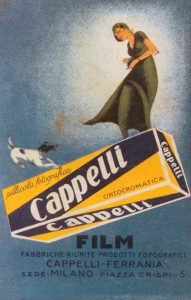
Now with new financiers and access to a company experienced in making photographic plates, in 1923, FILM Ferrania started to turn things around. In the next couple of years, with new cameras like the Leitz Leica in 1925, and eventually the Zeiss-Ikon Contax in 1932, celluloid roll film rose to prominence in Europe, and FILM Ferrania capitalized on the newfound demand for it. In 1932, FILM Ferrania and Cappelli would officially merge and by 1936 would start the manufacture of cameras, in addition to their film products.
Although moderately successful at this time in the Italian domestic market, Ferrania did not achieve wider worldwide success until after 1945 when they expanded their product offerings to more successful films like Ferraniacolor and Panchro 30.
Like other film makers such as Eastman Kodak, ANSCO, and GAF/AGFA, Ferrania would release a number of film cameras with their name on them, likely to further promote interest in their film products. The more people who bought Ferrania film cameras, the more likely they might be to buy Ferrania film.
With an expertise in chemicals and not the manufacture of cameras or lenses, in 1947 the company turned to another Italian company called Officine Galileo who was developing a new line of 35mm rangefinder cameras called the Condor.
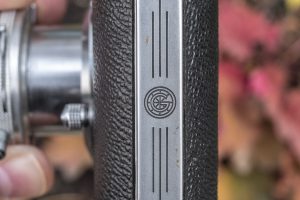
Officine Galileo’s history dates back to 1862, when Italian astronomer and instrument maker Giovanni Battista Amici, a well-known scientist of the time, started a workshop to build the tools and equipment necessary for his work. Prior to this, there was no domestic maker in the field of astronomy, requiring everything to be imported by other makers. The name Galileo was chosen in honor of Galileo Galilei, one of Italy’s most famous physicists and astronomers.
Shortly after the creation of his company, Amici would pass away and ownership would change hands, as did the types of products that the company made. In the 1870s Officine Galileo produced a wide variety of other products including electric and lighting instruments.
Ownership of the company would continue to change hands, and in 1896, now partnered with Istituto Agrario Vegni and run by an engineer named Giulio Martinez, Officine Galileo started production of optical instruments like rangefinders and scopes for the Italian Royal Navy.
During World War II, Officine Galileo’s location in Florence meant it’s factories were largely spared by Allied and German forces, surviving largely in tact, although many of the company’s machinery had been transferred to a factory near Milan where it had been destroyed by retreating Nazi forces.

After the war, Officine Galileo’s history was similar to that of Japanese optical companies like Nippon Kogaku in which Allied forces prohibited the manufacture of any sort of military use products. Officine Galileo was tasked with creating products that could be sold quickly to help boost the local economy.
In 1947, Officine Galileo produced the Condor, a simple but elegant 35mm rangefinder with a collapsible and fixed lens with a leaf shutter and coupled rangefinder. The general appearance slightly resembles a Leica with controls in approximately the same locations, but other than supporting the same type of film, shares little in common with the German camera.
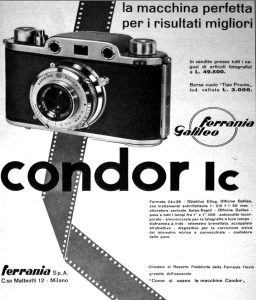
In my research for this article, I could not find any conclusive information regarding the partnership between Officine Galileo and Ferrania as most sites simply say that Officine Galileo made the camera and Ferrania marketed it. I am not sure if Officine Galileo had originally intended to build and sell the camera by itself, or if Ferrania’s participation was established from the very beginning. Versions of the Condor are available with and without the Ferrania branding, so I am not certain if the camera was marketed differently in different areas. Whatever the case, all versions of the original model are identical with or without the Ferrania branding.
The Ferrania was sold both domestically and for export. The Italian language ad to the right shows the Condor 1c with a Ferrania Galileo logo next to it suggesting some kind of joint marketing venture, although the bottom left corner of the ad shows a proper Ferrania logo.
The ad to the left shows the Condor being sold in the United States by a company called Director Products Corp, located in New York City for $93 including tax. When adjusted for inflation, this compares to just over $1000 today, quite a steep price for a camera from a company unknown to most Americans at the time.
The partnership between Officine Galileo and Ferrania produced a couple of different Condor cameras. A very similar Condor 1c with a faster f/2.8 Eliog lens was available, as was a rangefinder-less Condor Junior.
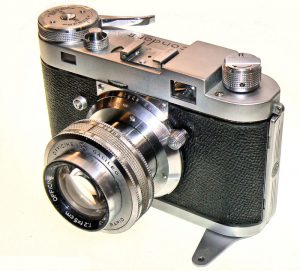
In 1951, a heavily updated model called the Condor II was released with a faster f/2 ESAOG lens, combined coincident image rangefinder, film advance lever, folding rewind crank, and different cosmetics. Like the original model, the Condor II was available with or without the Ferrania branding. Finally, there was a lower end Condorette model which shared the main body of the Condor, but with a more basic top plate, a shutter with top speed of 1/300, and a 4cm f/4 TEROG lens.
It’s worth noting that an entirely unrelated camera called the Condor was produced by a Japanese company that went both by the names Sanyo Kōgaku-Kikai Co., Ltd. and Condor Camera K.K. These Condor cameras were cosmetic copies of the Nikon S2. Versions with and without a rangefinder were made, but both had fixed lenses and neither were anywhere near the quality of the original Nippon Kogaku cameras they were a copy of.
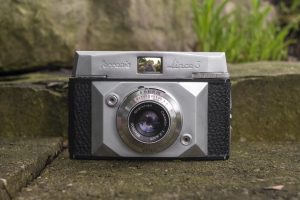
After the Condor, Ferrania would continue to release cameras with their own name, but like Kodak, most models were entry level basic cameras like the scale focus only Ferrania Line series.
In 1964, Ferrania would be purchased by The 3M Company, an American chemicals company that had interest in a wide variety of industries. Under 3M’s ownership, Ferrania expanded their film stock offerings, but stopped producing cameras. The company would continue making film for the next couple of decades, but never to the level of success achieved by Kodak, GAF, or Fuji.
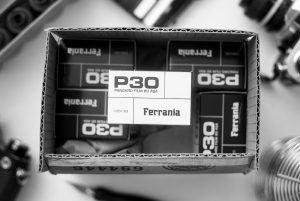
Ferrania would survive into the 21st century, but between the years 2008 and 2012, began liquidating it’s assets, slowly discontinuing it’s various line ups of film, before in 2012 laying off it’s remaining workforce.
The brand wouldn’t lay dormant for long however, as a year later, in 2013, the Ferrania name, trademarks, it’s machinery, and many of it’s ex-employees would be acquired by a new company called FILM Ferrania s.r.l. who would revive the brand, re-releasing several of the original company’s earlier film stocks. Although new new Ferrania cameras would be made, since 2013, FILM Ferrania has re-released several of the company’s classic films such as P30, and as I write this today, work is being done to bring back a Ferrania color film.
Today, if you mention the name Ferrania to any film enthusiast, very few will think of cameras like the Condor, as the company was much more successful as a maker of film than cameras, but for the thorough collector, the Condor is a desirable model, both for it’s looks, unique history, and quality. While it’s not fair to consider these “Italian Leicas”, they are well built and worthy cameras to collect and use.
My Thoughts
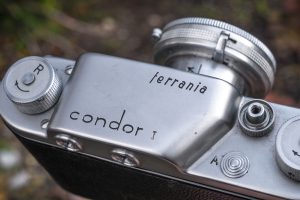
Having recently reviewed my first ever Italian camera, the Rectaflex, my friend and fellow collector, Adam Paul asked if I was interested in another Italian camera, his Ferrania Condor. Of course I replied, and soon thereafter, this nice little Italian rangefinder was in my possession waiting for it’s time in the spotlight.
In my research for this article, I found quite a few references suggesting this is some sort of Italian Leica, and if by that they mean, a 35mm rangefinder camera made in Italy during the mid 20th century, then yes, this is an Italian Leica. Beyond that over simplification though, any reference to other Wetzlar made cameras ends.
To my eyes, the Condor is a very different camera, which starts with it’s leaf shutter, and fixed lens. Sure, the earliest Leicas had fixed lenses too, and the Leica Model B had a Compur leaf shutter, so I guess you could say it shares something in common with that, but I refuse to continue to entertain this comparison between what I consider to be two very different cameras.
Ferrania has always been more well known for it’s film, and like other “film first” companies like Kodak, Fuji, heck even Ilford, these companies on occasion would put their name on a camera, likely to help drum up interest in their film. Unlike many other Ferrania branded cameras however, the Condor is quite a nice little camera, built to a very nice quality standard. Weighing in at a mere 524 grams, and with nicely rounded corners and good ergonomics, the Condor is easily portable and very comfortable to hold.
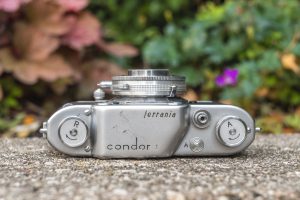
The top plate has from left to right, a pop up film rewind knob, the raised portion for the viewfinder and rangefinder optics, cable threaded shutter release button, advance/rewind mode switch, and film advance knob. The Condor, both in Ferrania branded and unbranded versions does not have an accessory shoe on the top plate suggesting that the the only options for flash would have been a bracket attached to the bottom plate.
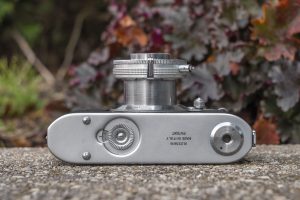
Flip the camera over and you have the exposure counter on one side and the 1/4″ tripod socket on the other. The exposure counter is additive and counts how many exposures have been made and must be manually reset to 0 after installing each new roll of film. Two small feet help stabilize the camera when set on a flat surface.
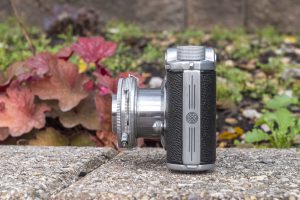
From the camera’s left side we see the door release latch which is covered by a metal plate with the Oficine Galileo’s logo engraved into it. Opening the camera requires you slide out the release latch near the bottom and pull open the door. From the side, you can also get a good look at the depth of the camera with the lens extended.

The right hinged film door reveals an ordinary looking, but basic 35mm film compartment. Film transport is from left to right onto a fixed, double slotted take up spool. Single polished rails above and below the film gate were standard fare for cameras of this era, but the film pressure plate is unpolished bare metal, lacking in any sort of dimples often found on other mid 20th century film cameras to reduce resistance on the film as it travels across.
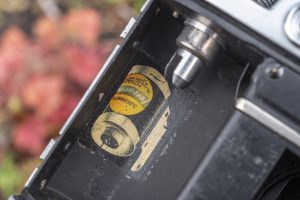
A nice touch is the original Ferrania film sticker inside the film chamber, encouraging you to use the company’s own film. Stickers like these were common in many Kodak and AGFA cameras of the era as well.
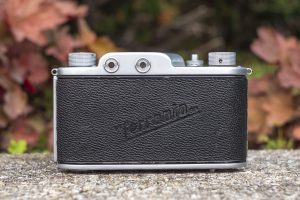
With the door shut, the back of the camera has a nice embossed “ferrania” logo on the back door, reminiscent of many German cameras of the era made by Kodak, Ciro, Welta, and several others.
The two circular eye pieces for the rangefinder on the left and viewfinder on the right are on the raised portion of the top plate. They are small, but effective.
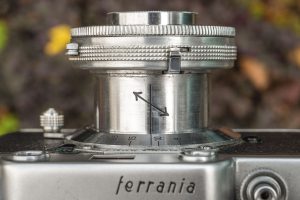
Like many other interchangeable or fixed lens cameras of the era, the Eliog lens is collapsible and must be extended before proper exposures can be made. On the top surface of the polished metal barrel is an engraved straight line with diagonal lines to remind you which direction the lens must be rotated to lock it into position. An arrow pointing to the left and away is the direction the lens must be turned when pulled out, and an arrow pointing to the right and towards the body is the direction the lens must be collapsed.
As you might expect, even with the film advanced and the shutter cocked, the top plate shutter release will not fire with the lens collapsed, however doing so will release the double exposure prevention. Strangely, the Condor has a secondary shutter release on the top of the shutter which will, meaning that with the shutter cocked, but the lens collapsed, exposures can still be made which would be horribly out of focus. As a result, you would never want to leave the shutter cocked on the Condor with the lens collapsed.

The viewfinder and rangefinder are in two separate windows just like a screw mount Leica. The rangefinder on the left has a higher magnification than the main viewfinder window on the right meaning that achieving precise focus is very easy even though you cannot see the entire image. There is also a small wheel on the front edge of the camera, to the right of the rangefinder window which acts as a diopter correction for the rangefinder, so if you look through the rangefinder and the split image is blurry, rotate this wheel to correct it.
Although this two window arrangement is slower, I find that it helps me get focus in lower light situations. In the image above, I show both the rangefinder and viewfinder windows in a composite image, even though in use, you can’t see through both at the same time. Both windows suffered from some internal haze which lowered the contrast a bit, but not enough to still be usable. As you can see, the rangefinder’s double image is still very strong.
The Ferrania Condor is a fine camera, built to a very good quality standard. It’s not quite to the level of the Rectaflex, but it’s certainly a huge step up from the Bencini Koroll II that I reviewed back in July 2017. This is a camera that has clean styling, good ergonomics, and a lens which should make it capable of wonderful images, but does it?
My Results
I took the Condor out with me on an early spring adventure to a local park and without much in the way of colorful things to shoot, I loaded in some fresh Kodak TMax 100. While I felt confident the Condor was in perfect working order, I tend to stick to 100 speed films with cameras I have never shot before as I’ve found that most shutters work the best at speeds around 1/100th of a second, perfect for Sunny 16.
Earlier in this article, I attempted to counteract the frequent comment that the Condor is an Italian Leica by saying that other than having a vaguely similar appearance and using the same kind of film that the Condor shares little in common with the Leica. I now feel the need to backtrack that somewhat and say that after seeing the images in the gallery above, the Condor is equally capable of impressive images. Sure you’re stuck with one focal length, but if I were to do an apples to apples comparison between these shot through the Officine Galileo Eliog 5cm f/3.5 lens and some through a Leitz Elmar 5cm f/3.5, I don’t know that anyone could tell them apart.
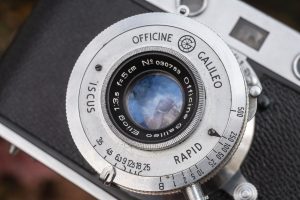
The Eliog triplet, like many other similar lenses of the 20th century is remarkable not only for it’s simplicity, but on how well it renders images with extreme sharpness in the center, with only the slightest hint of softness and vignetting near the corners. In my time reviewing old cameras, more often than not, I find that I prefer the look of images shot through simpler three element lenses like this because of their vintage look, compared to more technically impressive 6+ element lenses that deliver an image which is almost ‘too perfect’.
The Condor camera has a lot going for it. Familiar ergonomics, an excellent lens, and simple operation. The small two window viewfinder and rangefinder windows were not a problem for me, even while wearing prescription glasses, nor was the collapsible lens. Although it is possible to accidentally trip the shutter with the lens collapsed, not cocking the shutter until you are ready to fire the shutter will eliminate the chance of wasted exposures.
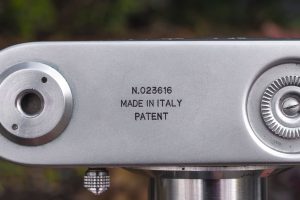
This is a slow camera to shoot, so for someone not familiar with early 20th century 35mm cameras like this, it might seem strange, but for me, it only takes a short while to get used to the camera’s operation. I loved the feel and size of the camera, it’s size fitting perfectly in my hand, and it’s weight not being an issue. When I wanted to slip it into my pocket, collapsing the lens meant it fit fine into a shirt pocket. If I had one nitpick of the camera, it’s that I found the 5cm focal length just a bit too tight for the situations in which I wanted to use this camera. With a fixed lens, there’s no wide angle option, so a slightly wider 4cm or even 4.5cm focal length would have allowed for a bit more breathing room when composing images, although to be fair, finding anything but a 5cm lens on any 35mm camera of this time would be pretty tough.
Overall, the Ferrania Condor is an excellent camera with great looks, familiar ergonomics, compact size, easy operation, and it is capable of excellent images! As this is the only example of this camera I’ve come across, I can’t speak to how well others might hold up, but if you get a chance to shoot or buy one in good condition for a reasonable price, I definitely recommend it!
Related Posts You Might Enjoy
External Links
http://camera-wiki.org/wiki/Ferrania_Condor
https://www.italianways.com/the-galileo-condor-i-freedom-to-photograph/
https://www.collection-appareils.fr/x/html/camera-1337-Ferrania_Condor%20I.html
http://www.cjs-classic-cameras.co.uk/other/italia.html
http://www.savazzi.net/photography/condor1.htm
http://www.cameraboussat.fr/dossier_collection/cible.php?id=116&marque=Ferrania
http://web.archive.org/web/20131008220219/http://www.topgabacho.com/Condor.htm (in Japanese, archived)
http://web.archive.org/web/20160503121927/http://www.storiadellafotografia.it/2010/02/21/la-fotocamera-ferrania-condor-i/ (in Italian, archived)

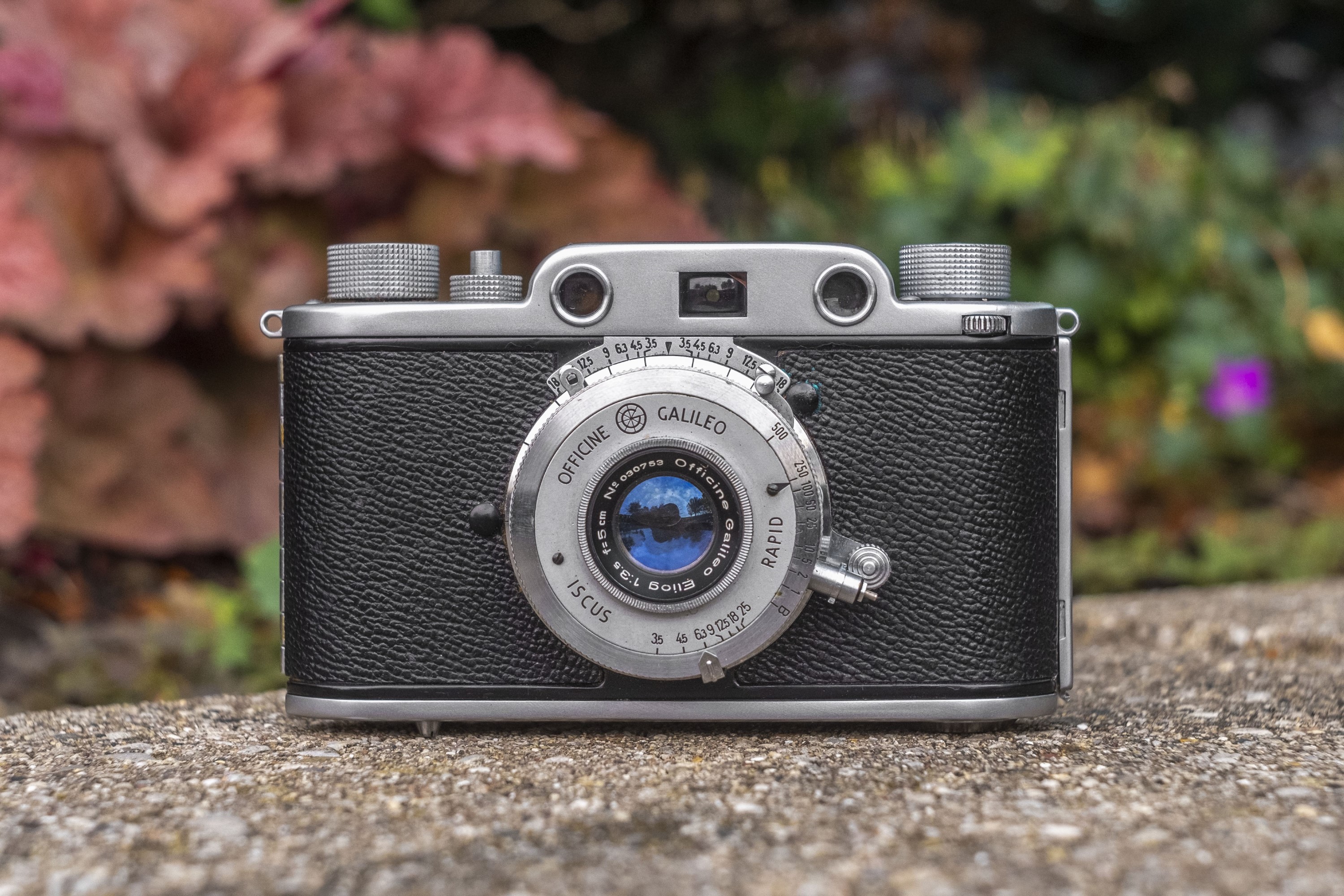
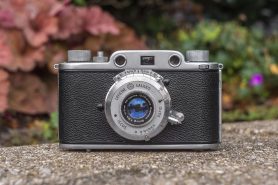
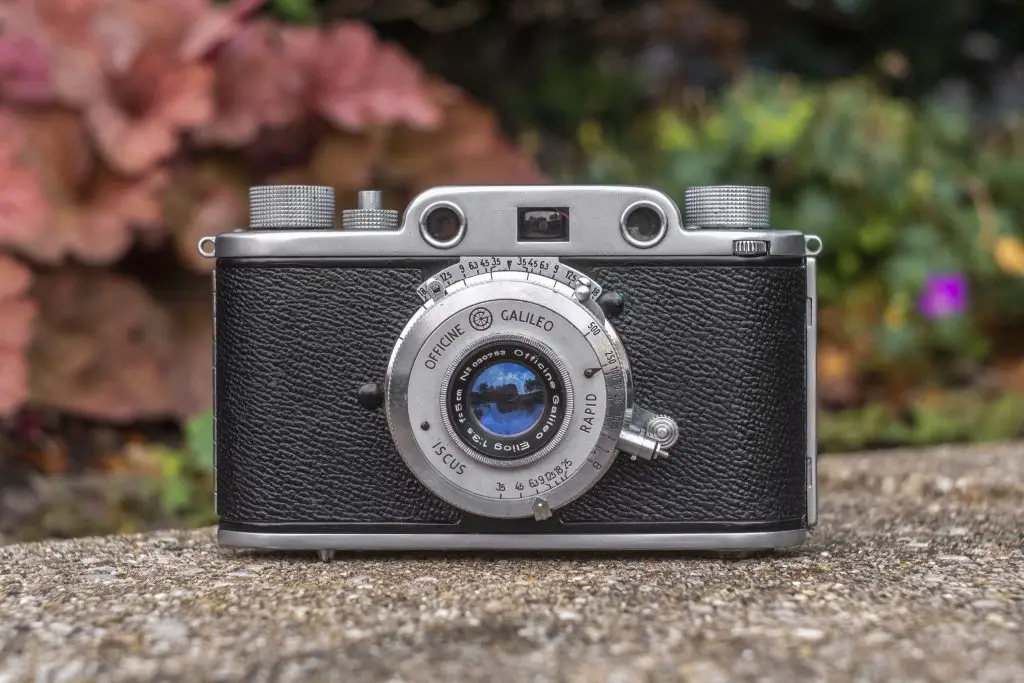
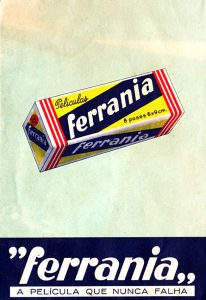
















Nice work again, Mike! Another terrific read.
Coincidentally, I put the first roll through my own Condor I on Saturday, and then after I scanned the film tonight, I found your write up! Excellent timing, thank you. Those are very good looking images from the Eliog.
My own example shows no signs of the “Ferrania” branding anywhere and is simply badged “Officine Galileo”. They’re a pretty looking little thing, aren’t they? For reasons I can’t exactly put my finger on, as soon as I spotted mine in a rural antique shop, I had an inkling it might have been Italian-made and immediately took a closer look, before quickly buying it.
I scored my own years ago for a paltry AUD $80. It basically worked, but, it did need the beam splitter replaced on arrival, and new light seals. It’s a very easy camera to work on, Eg it has just about the simplest film advance mechanism you’re ever likely to find on a 35mm camera. I gave everything a good clean and lubrication (including the lens retaining lugs to help the lens collapse and extend a bit more smoothly). Rangefinder horizontal adjustment can be done in a couple of places, including under the top cover or under the film gate. Start under the cover, unless one has really been messed with. A nicely made perch for the beam splitter made installing a replacement quick and easy, and I was impressed that, after carefully installing a new 50:50 mirror, the vertical patch alignment remained spot on. Quality of machining and fit must be good.
The focus adjustment dial for the rangefinder telescope on the front rewind end works particularly well. The serrations you can see on that dial are, in fact, the gear teeth which drive the curved rack connected to the correction lens. In some ways, I think this aspect of its design is better than Leica. After cleaning the optics and adding a speck of oil on the shaft for the adjuster, dialling in the most incremental of vision/distance compensation is super smooth and ultra-progressive and may be done with ease. No going back and forth, looking for the “sweet spot” if you are being fussy about best possible sharpness, as can be the case with even a well adjusted IIIf or IIIg.
The Condor I made it to Australia in the day I believe, although I am not sure by whom it was distributed/marketed. But there are a few odd examples which have been uncovered here branded as a “Candog” not, “Condor”. Local trademark clash, perhaps? Personally, I’m happy to have a Condor. I just think it sounds better!
Thanks for another great report on a little-known rangefinder. eBay is not exactly teaming with them, nevertheless when I looked the other day there were a handful of Condor Is for sale at (mostly) fairly reasonable prices. Now that you’ve done this write up, I wonder how long that will be the case? Interested readers might wish to search for one sooner, than later. I have a feeling that, after potential buyers see the quality of your images, prices may soon begin to climb!
Cheers,
Brett